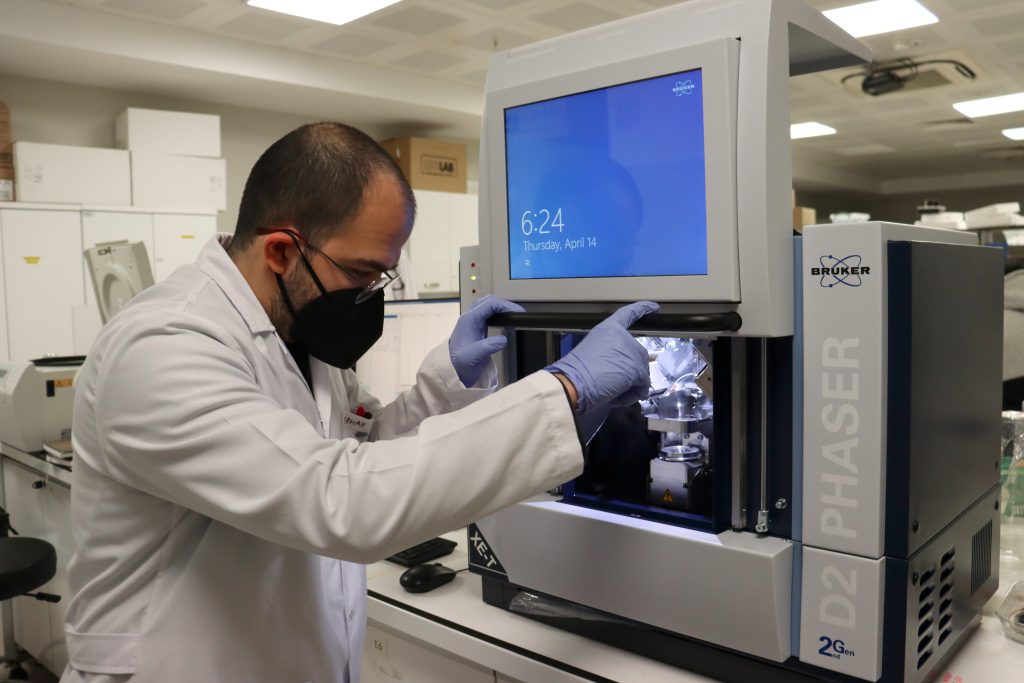X-Ray Diffraction (XRD)

X-Ray Diffraction (XRD) method is a powerful technique in acquiring information about atomic and molecular structure of solid matter. Diffraction occurs when an electromagnetic beam sent to the sample during analysis encounters a set of obstacles with a distance comparable to its own length. These diffraction profiles allow the identification of the crystals in the sample. XRD analysis does not cause any damage to the sample, and this technique permits the analysis of even minute quantities of sample. Samples can be in powder or bulk forms.
With XRD, structural investigations of metals, ceramics, polymers, composites and nanomaterials can be performed.
Sample Preparation and Measurement
After the sample is prepared preserving its original physical and chemical properties, the analysis conditions are determined. In its simplest form, the solid sample is grounded appropriately, then placed in a special sample holder and the analytical procedure is initiated.
Typical XRD applications:
XRD has a wide range of applications:
- Geological identification of minerals and rocks,
- Structural analysis of metals and alloys,
- Structural analysis for ceramics and cements,
- Structural analysis for the pharmaceuticals,
- Structural analysis of the synthesized materials, including biomaterials,
- In archeology, structural analysis of materials that constitute historical buildings.

